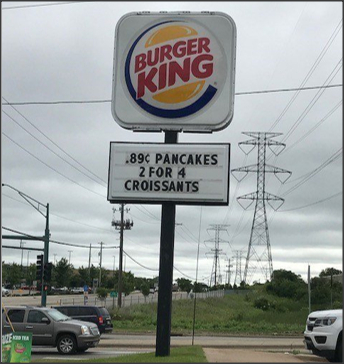Remember how you were always told to pay attention in math class? If you did, then you wouldn’t have been caught making these common math mistakes. Take a look at these real-life marketing examples and see if you can catch where the math went wrong.
Math Mistakes that Cost Money
Remember when your math teacher taught you about fractions? Back then, you might not have realized how fractions could help you to decide which burger to buy. In the 1980s, A&W marketed their competition for McDonald’s Quarter Pounder.
The A&W one-third pound hamburger was a hit with customers who liked the taste and thought it was a better product than the Quarter Pounder. Both burgers were the same price. However, people thought that price-wise, the quarter-pound hamburger was the better deal.
Consumers believed that four was bigger than three, which meant that for the same price, a quarter-pound of meat was the better value.
Sometimes, marketers and businesses just cannot assume that consumers know how to compare fractions.
Best Value for Your Money
Sometimes a marketing blunder occurs because people just can’t do the math. At other times, marketers are counting on consumer math skills to influence what they buy.
Take a look at these price points. You can get the small fries for $6.00. Or you can pay a dollar more for twice the amount of fries at 32 oz. Seems like a bargain! Then you have the third choice, $9.50 for almost three times the amount of fries. Which one is the best bargain?
When considering the three choices, you’re not just looking for the best bargain anymore. You’re looking for the best value. The large size seems to be the best value for your money, as well as the best choice.
Think again, however. Do you want to buy 88 oz of fries? Sometimes the math isn’t about calculating the best value, but the best deal for what you need. If 32 oz of fries is enough for you, then paying a dollar more for twice the fries (32 oz) is the best choice.

One Little Dot Makes a Big Difference
How are your money math skills? In a few different price listings, we’ve noticed the placement of a little dot can make a big difference. Look at the picture that follows.
What would you rather pay for? 89¢ pancakes or .89¢ pancakes?
Well, 89¢ pancakes seem like a good deal. They cost less than a dollar. But .89¢ pancakes must be from another time! When was the last time you could buy something for less than a penny?
(In the USA, you might be able to find a penny in your pocket to buy your breakfast. In Canada, however, they stopped making pennies, so you can’t even find a penny for your less than a penny pancakes.)

How Much Are You Getting? Do the Math… If You Can!
Do you make mistakes when calculating how much value you’re getting? Someone made a math mistake with percents. See if you can solve the following math problem.
The previous laundry detergent size could wash 25 loads. The new, larger size laundry detergent can clean 53 loads. According to the equation on the ad, 25 + 25 = 53, or roughly double the number of loads for the new size. Seems like the new size is a better deal than the old one… until you notice another number on the bottle.
The new detergent size does 30% more loads than the previous one. The ad wants you to think that 30% approximately doubles what you’ll get with the new product. What do you think?

Key Takeaways
Paying attention in math class does have its benefits! Those math skills can help you to find the best value, catch misleading calculations, and avoid tiny but significant mistakes. Did you catch all the common consumer math mistakes right away?
If you enjoyed this article, subscribe to make sure you don’t miss the next post!


What an awesome article. Well done.
LikeLiked by 1 person
Thanks for reading it!
LikeLiked by 1 person
You make an excellent point, Vanya. I carry out calculations in my head all the time. However, when preparing a report, I then double check with a calculator etc. My grandfather was a mathematician, so his ability to undertake such calculations was even quicker than the blink of an eye. I can give our kids an answer to a problem before they bring up the calculator app on their phones 😂 I think the marketing conundrum is interesting. Where I live, such misleading and deceptive marketing became illegal ten years ago.
LikeLiked by 2 people
The three price point marketing tactic still exists here and there. Thanks for your comments! Some people are so talented with doing math in their head!
LikeLiked by 1 person
Playing up an illusion in numbers!
LikeLiked by 2 people
Marketing seems to really rely on number psychology.
LikeLike
Creative manipulations!
LikeLiked by 1 person